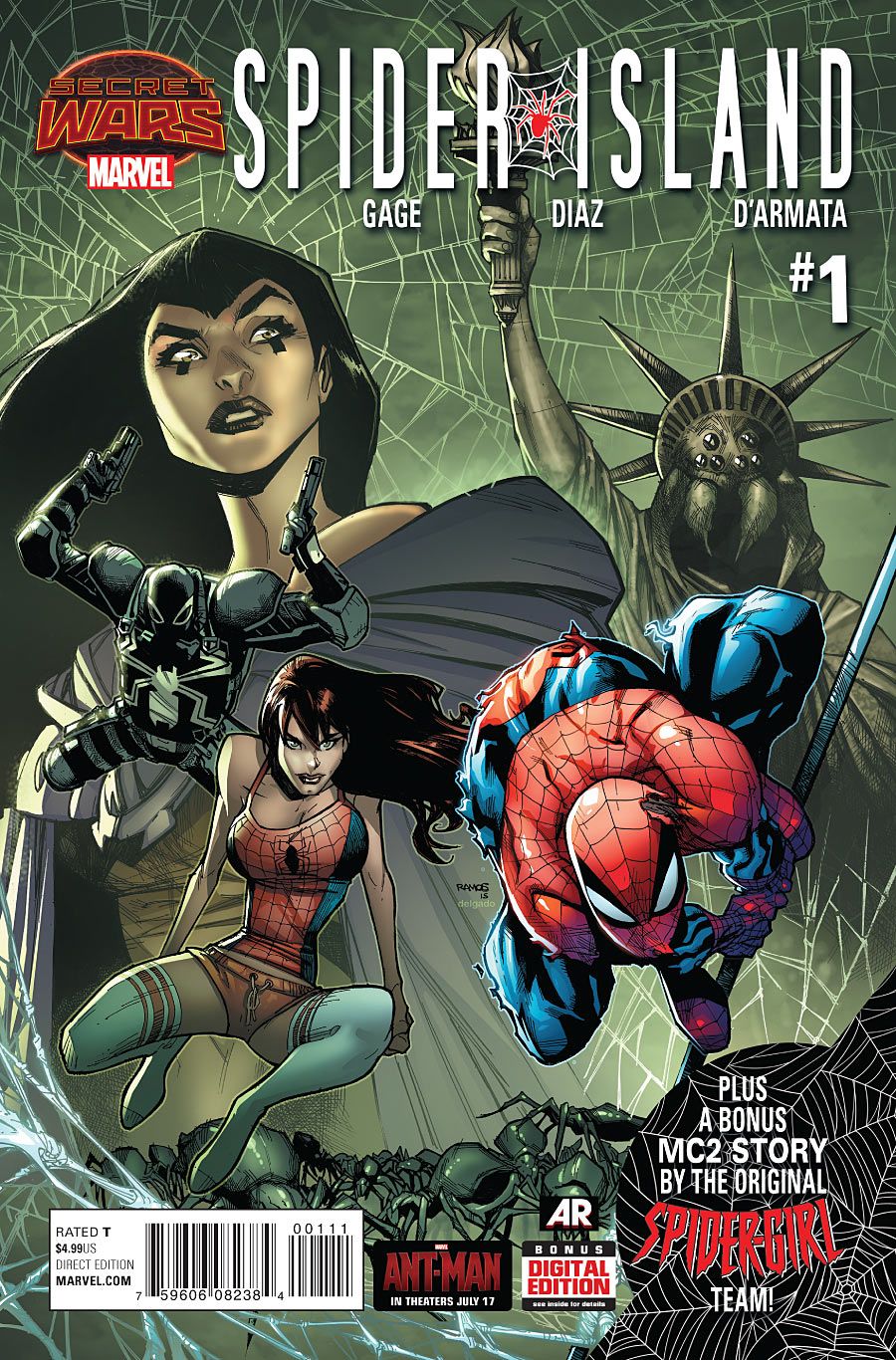Taken from a world where the Spider-Queen's reign over Manhattan took root and the Earth's Mightiest have fallen, writer Christos Gage and artist Paco Diaz tell the tale of Venom, Vision and Spider-Woman as they try to stay alive and figure out how to save the day in "Spider-Island" #1.
The story is straightforward desolate future stuff: tragedy took an even more tragic turn, but humanity is clinging to existence and has hope to buoy it up. The good guys are insanely outnumbered and out-powered but, in this case, Flash Thompson (Venom) has a plan, one that relies on help from Jack Russell, Werewolf by Night.
Right there is the core of what makes events like "Secret Wars" and concepts like Battleworld fun and engaging: mixing characters and scenarios just to see what happens. At no point in this story does it feel like the plot leaves Gage's control, but Gage sneaks in some surprises that are certain to hit the fun zone for long-time Marvel readers.
Diaz's art is polished and crisp, heavy with detail, but clean in its storytelling. He clearly wants to give readers the biggest payout whenever a new central character appears. Diaz makes each appearance feel like a splash page by drawing the characters large and angled into the center (or even dramatically moving out from the center) of the pages. This is how Diaz introduces readers to the Spider Queen-controlled Captain Marvel, Venom, Vision, Werewolf by Night and Spider-Hulk (more of the inherent, experimental fun at play right there). Keeping the panels active, Diaz puts most of the book on some sort of angle throughout, amplifying the energy and uncertainty as Venom and team make a bold stand against the Spider-Queen and her forces. The visuals work for this story, with each character getting one near-iconic image.
Frank D'Armata follows the lead on the story, filling the comic with bursts of bright colors, but mostly miring "Spider-Island" #1 in dusty tones that seem welcoming to spiders and uncomfortable to readers. Travis Lanham letters the issue and brings along a nice modern day gimmick to enhance dramatic moments. The letterer uses dynamic introductory word balloons that don't quite cross into iconic territory, but when "SPIDER-HULK SMASH!" hits the page, there's no missing it.
How Spider-Island came to be included on Battleworld is not discussed in "Spider-Island" #1, but it matters little to this self-contained tale that could just as easily have been published under the "What If. . .?" banner. This story fills a niche and gives readers a chance to see an experimental idea play out, even if it isn't set to forever alter the landscape of comics or even the Marvel Universe.
Rounding out "Spider-Island" #1 is a fun, divergent tale of the MC2 Marvel Universe. Spider-Woman (nee -Girl) laments the losses sustained during "Spider-Verse" as she shares the tale with Stinger, the MC2 version of Cassie Lang. The "Spider-Girl" creative team of Tom DeFalco, Ron Frenz and Sal Buscema give readers a fun opening chapter of a story with more to tell, adding a nice little bonus to this comic.
The MC2 tale doesn't anchor itself to "Spider-Island," Battleworld or even "Secret Wars," but it does spin out from events of "Spider-Verse," making "Spider-Island" #1 a lighter version of an anthology with options for readers who want Spider-Man-related stories that don't necessarily star ol' Webhead.

